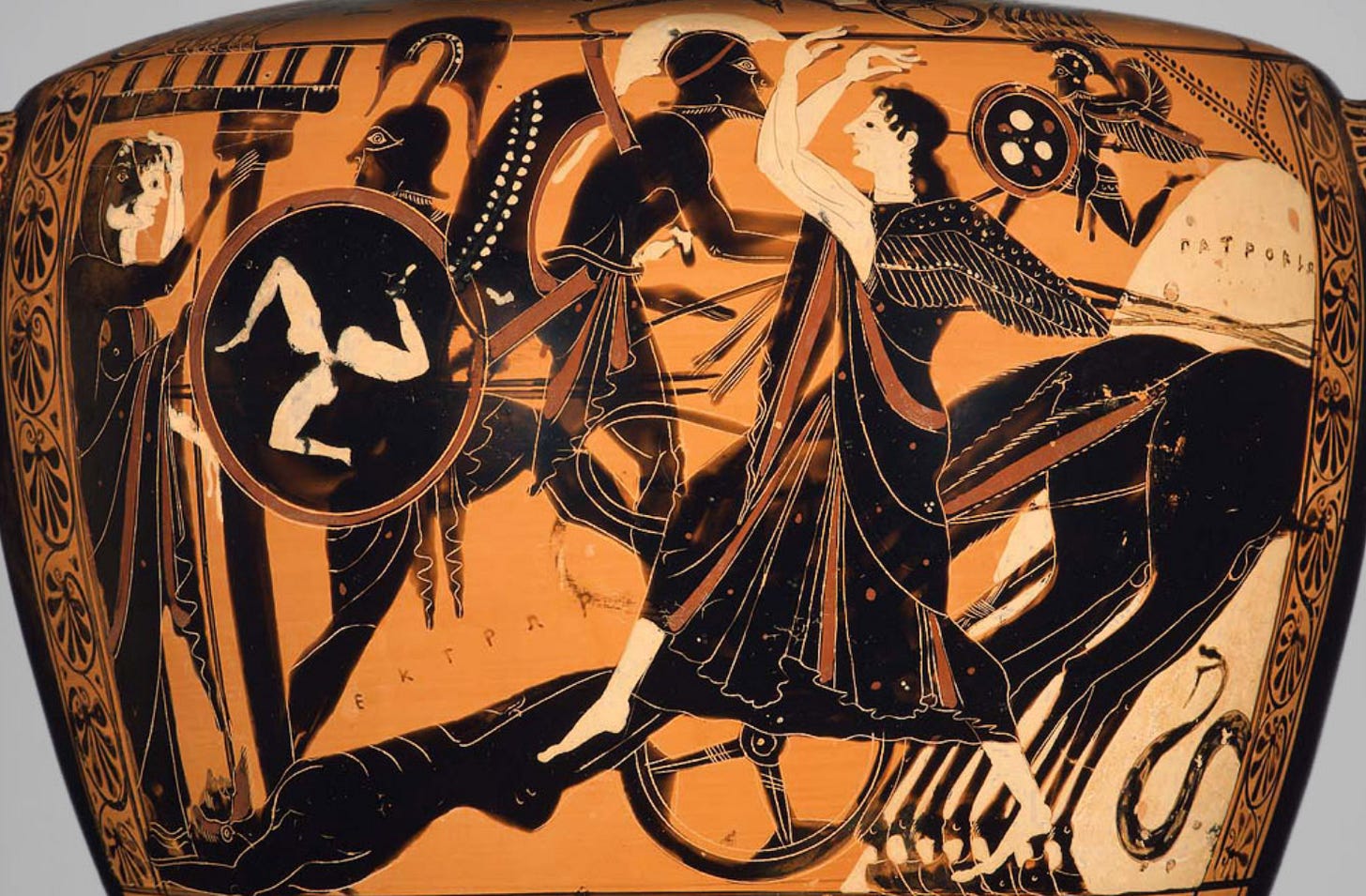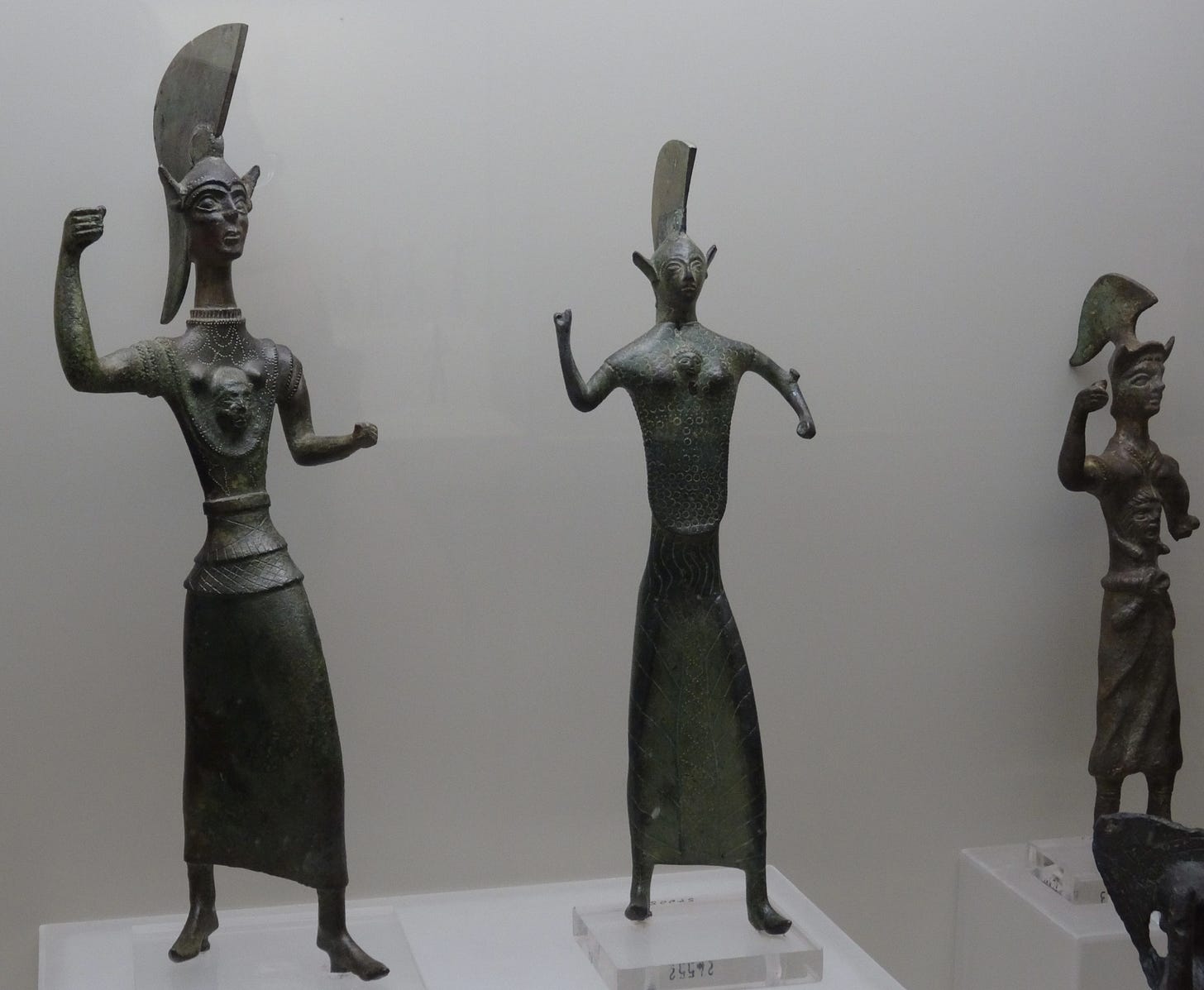Fresh Batch #87: Is Etruscan the Oldest Alphabet?
The Non-Indo-European Languages of Italy
Grant wrote (The Etruscans, p. 58), “After 600 BC, during a time of rapid political and economic evolution at Athens, these ‘black-figure’ wares became a serious threat to the Corinthian export trade, completely superseding it in Etruria and elsewhere by 550. Twenty years ago, a list was made of no less than 1,560 Attic black-figure vases found in Etruria, and now there are many more.”
Again (Ib. pp. 60, 61), “Far from requiring the delineation of the human body, whether idealistic or realistic, the Etruscans’ own conception of art involved highly formalized, dream-like patterns, and, sometimes, grotesquely caricatured exaggerations and elongations. The balances and proportions, the clear frameworks and logical formal principles that were the essential features of Attic classicism held no interest for them at all. (Brendel, pp. 52f., 59, 72, 314.) The Etruscans would have preferred Picasso to Raphael; and it is in no way surprising that a number of twentieth-century painters and sculptors (notably Giacometti, Marino Marini, and Modigliani, who originated from Etruria) have drawn more inspiration from Etruscan than from Athenian art.”
This is also a technique of the Mexicans in regards to their paintings. Could there be a religious affinity motivating both cultures? According to Dupaix, “The proportions of the human form they sometimes grossly violated, evidently not from ignorance of their art, since many of their works display correctness of design; but rather in consequence of some political or religious laws existing in the Mexican empire, which compelled its artists to give to the statues of their deities a similarity of attitude and a uniformity of style and character;—as in Egypt, where the priests prescribed fixed rules for statuary and the formations of images; thus fettering the inventive genius of the artist, and checking the progress of sculpture.”


The word papalotl means butterfly in Classical Nahuatl, the Aztec lingua franca during the time when the Spanish arrived. Papilio is the Latin word for butterfly. Is this coincidence?
There is much more revealed to suggest cultural diffusion between the Americas and the rest of the world in Spirit Whirled: Terminalia (click the image), but suffice to say, it is either real and worthy of investigation, or it is part of a vast scheme of forgery that is also worthy of investigation. We must get to the bottom of it before it’s too late.
Become a member to access the rest of this epic article.
Keep reading with a 7-day free trial
Subscribe to Ancient History, Mythology, & Epic Fantasy to keep reading this post and get 7 days of free access to the full post archives.







